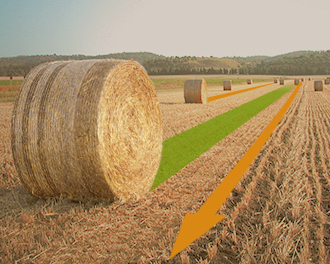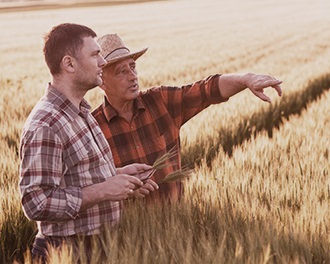| UK based IGER (Institute of Grassland and Environmental Research) and Dow Chemicals, producer of polymer resins for silage film, recently collaborated on an in-depth survey on true cost and benefit comparisons between traditional clamp silage and that baled and wrapped. The results showed that there are clear gains to be made using the baled option, quite apart from the convenience and versatility that baled silage offers the end user. | The figures show potential losses from spoilage in the harvesting, storage and feeding of clamp silage can make a significant impact on the return in capital employed in the operation. It must be remembered that, typically, the penetration depth of air into a normally compacted silage clamp is approximately 1metre. If the normal feed rate from a clamp is 1 metre per week, then in time the entire clamp will be exposed to oxygen for 1 week. This is in stark contrast to baled silage, which allows a more controlled utilisation of forage with less exposure per tonne |
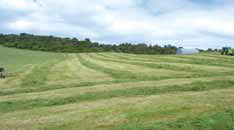 |
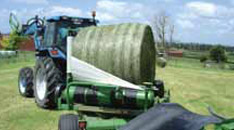 |
| The study compared the costs, output and losses possible from one hectare of land, taking Fresh and Dry matter forage for both dairy and beef production. The study costs were based on harvesting clamp silage costs per Ha and costs on bales based on individual bale preparation, assuming bale wrapping cost of £1.00; with economic benefit based on milk price of 18p/ltr and beef value of £1.90/kg live weight gain. | Baled silage is normally assumed to be valued between £10 – £15/bale, depending upon the quality of the bale and the crop ensiled, of course. However, current stocks of baled silage are trading at a higher than normal price due to the shortages created by the hot summer of 2006, which is rumoured to repeat again in 2007, suggesting baled silage could be one of the safest bets for forage conservation in 2007. |
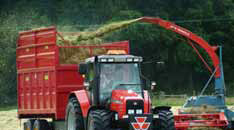 |
The use of 6 layers of film on the bale, in preference to the normal 4 layer application will also serve long term benefits, by offering a significant increase in the protection of the crop inside but, more importantly, providing a far more productive environment for good fermentation of the crop, with air contamination almost eliminated. This was outlined in studies carried out 3 years ago by The Centre for Dairy Research (CEDAR) at the University of Reading; which showed that the losses incurred to an 800kg+ bale of silage wrapped with 4 layers was almost 9% of its total feed value, compared to less than 1% for a bale wrapped in 6 layers. If a bale was valued at £15, for good quality crop and bale condition, then the 8% saving in feed value amounts to almost the entire cost of the film used to wrap it in 6 layers. The figures don’t lie… |
Advantages of baled silage

